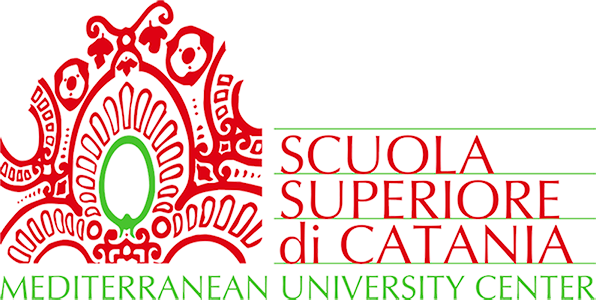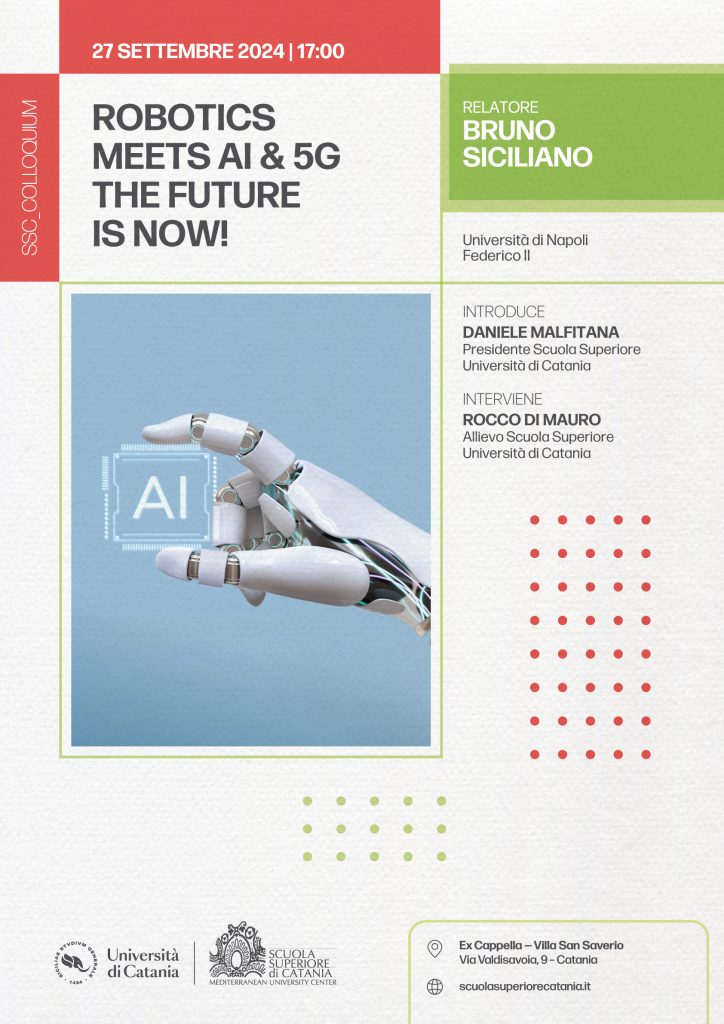Venerdì 27 settembre 2024 | Ore 18:00
Ex Cappella – Villa San Saverio, Via Valdisavoia 9 (CT)
Di Bruno Siciliano – Università di Napoli, Federico II
Bruno Siciliano, Professor of Robotics and Chair of the Scientific Council of ICAROS Center at University of Naples Federico II, and Past President of IEEE Robotics & Automation Society, one cannot overlook what is his background: the city of Naples and the reckless passion for Napoli soccer team. It then happens that the background comes to the fore and becomes for the robotics expert at an international level a turning point. Like when, having earned his PhD degree, he decided to build his academic future in his city and for his city, declining a faculty position at a prestigious American university, (also) because of the football faith that has always accompanied him in the team’s highs (those were the times of Maradona) and lows. His book Robotics is among the most adopted texts in universities around the world, even though when he talks about his academic achievements there is the impressive Springer Handbook of Robotics, the reference manual for robotics at international level, edited with Professor Oussama Khatib, which he defines as “the most exciting professional experience of my life”. A work of coordination of over 200 renowned researchers, with the goal (fulfilled) of offering a unique tool to the scientific community of robotics and beyond. His research group at PRISMA Lab has had 25 projects funded by the European Union for a total of 25 million euros in the last eighteen years, including a Synergy Grant and an Advanced Grant from the European Research Council. “Keep the gradient” is the motto that Siciliano invented, meaning a constant search for new ideas and new solutions. A hymn to complexity to capture challenges and opportunities always in the name of the art of work & play, as stated in his passionate TEDx Talk.
ABSTRACT
Robotics research has advanced in the last two decades through an intensive collaboration with other disciplines and research communities. Multi-disciplinary approaches are more successful in addressing the combined issues of cognition (perception, awareness and mental models), and physical attributes (safety, dependability and dexterity) in the world of robotics. Previously separated from humans behind a fence, the new advanced robots (or cobots) are sharing our workspace and collaborating with us.
Increasingly sophisticated built-in sensors enable them to see and feel the presence of humans and avoid accidental contact. The perception of robotics technology is improving, as we experience more ways it can positively affect our lives. In particular, the social and medical benefits of robots are starting to get more attention. In this scenario, the terms artificial intelligence (AI) and robotics are liberally used, and frequently interchanged today. However, the physical nature of a robotic system distinguishes it from the pure abstraction of AI. We are experiencing a transition from Information and Communication Technology (ICT) to InterAction Technology (IAT).
The fifth generation of wireless technology (5G) will pave the way for a new generation of robots, some free to roam controlled via wireless rather than wired communication links while exploiting the vast computing and data storage resources of the cloud. Armed with these capabilities, robots can be controlled dynamically in real time and be connected to people and machines locally and globally. In the near future, 5G will fully enable applications with minimal latency such as “factory of the future”, “remote surgical training” and many others that were previously beyond the capabilities of both cellular and robotics technologies.



